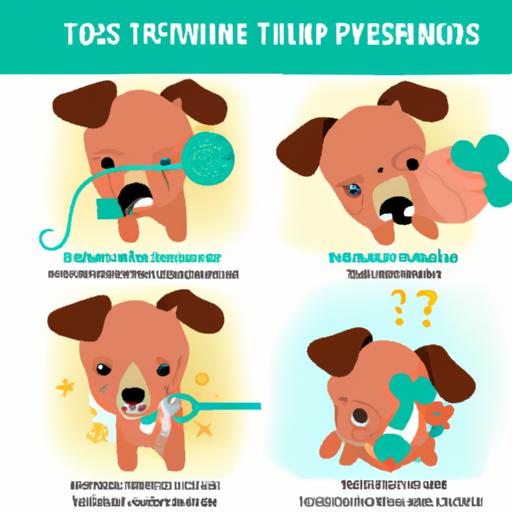As a caregiver, you’re probably all too familiar with the challenges that come with raising a puppy. One such challenge is teething, an important developmental phase in your dog’s life. This article will provide a comprehensive guide to understanding the process of canine teething, its symptoms, how to manage it, and how to provide the best care for your teething puppy.
Understanding Canine Teething
Just like humans, dogs also go through a teething phase. This is the process where puppies lose their baby teeth, also known as deciduous teeth, and they are replaced by permanent, adult teeth.
Teething typically starts between the third and seventh week of a puppy’s life and can last until they are six to seven months old. During this period, your puppy will have 28 deciduous teeth replaced with 42 permanent teeth.
It’s important to understand that teething can be an uncomfortable experience for your puppy, often causing them to chew more on toys, furniture, and even your hands to relieve the discomfort.
Symptoms of Teething in Dogs
As you navigate this phase of your puppy’s life, be aware of the following symptoms that can signal your puppy is teething:
- Increased chewing: Your puppy may chew more than usual on various items.
- Drooling: Excessive drooling can be a sign of teething.
- Missing teeth: You may notice some gaps in your puppy’s mouth where their baby teeth have fallen out.
- Bleeding gums: A small amount of blood is normal and is usually seen on chewed toys.
- Irritability: Your puppy may appear more agitated than usual due to the discomfort.
How to Manage Canine Teething
To help your puppy navigate this difficult period, here are some steps you can take:
-
Provide chew toys: Chewing can help alleviate the discomfort your puppy is feeling. There are numerous chew toys available that are specifically designed for teething puppies.
-
Use frozen treats: Frozen carrots or special puppy teething toys can provide a soothing effect on your puppy’s gums.
-
Maintain oral hygiene: Regular brushing of your puppy’s teeth can help keep their mouth clean and healthy during this period.
-
Visit the vet regularly: Regular check-ups with the vet can ensure that your puppy’s teeth are growing in correctly.
Providing Care for a Teething Puppy
As a caregiver, it’s crucial you provide your teething puppy with the best care possible. Here are some tips:
- Patience: Be patient with your puppy. Remember, they are not chewing out of defiance, but because they are in discomfort.
- Consistency: Consistently reinforce what is and isn’t acceptable for your puppy to chew on.
- Comfort: Provide comfort to your puppy during this tough time by spending quality time with them and offering lots of cuddles.
Frequently Asked Questions
1. When do puppies start teething?
Puppies typically start teething between their third and seventh week of life.
2. How long does teething last for puppies?
Teething in puppies can last until they are six to seven months old.
3. What can I give my puppy for teething?
You can give your puppy chew toys and frozen treats to help alleviate their discomfort.
4. Should I take my puppy to the vet for teething?
Yes, regular vet check-ups during teething are recommended to ensure your puppy’s teeth are growing in correctly.
Remember, as a caregiver, your role is crucial during your puppy’s teething period. Your understanding, patience, and care can significantly ease their discomfort and ensure they grow healthy adult teeth.



